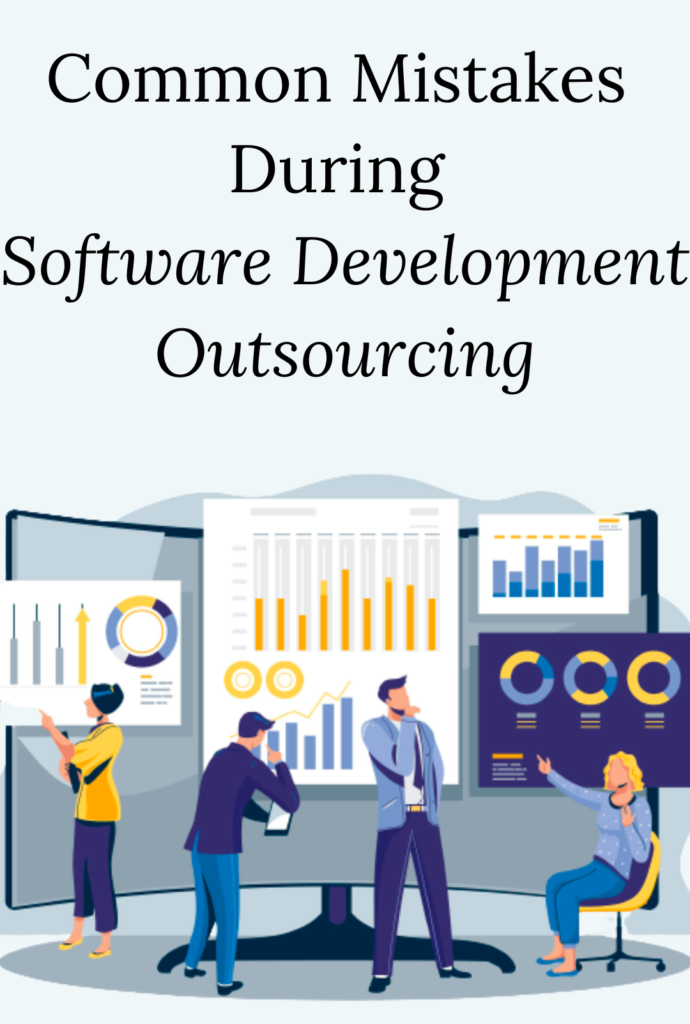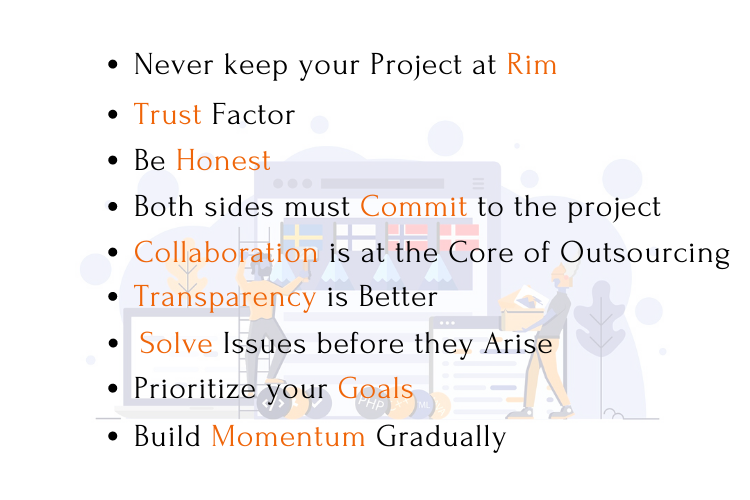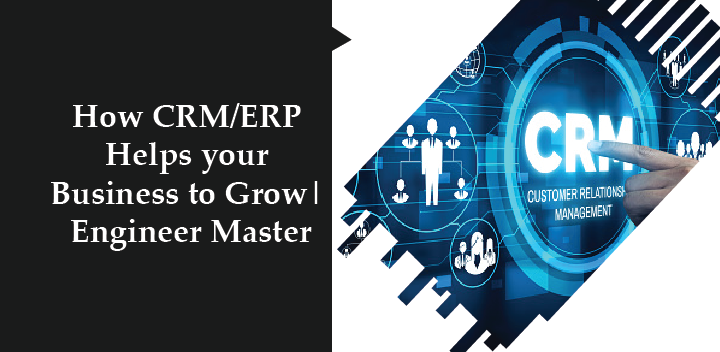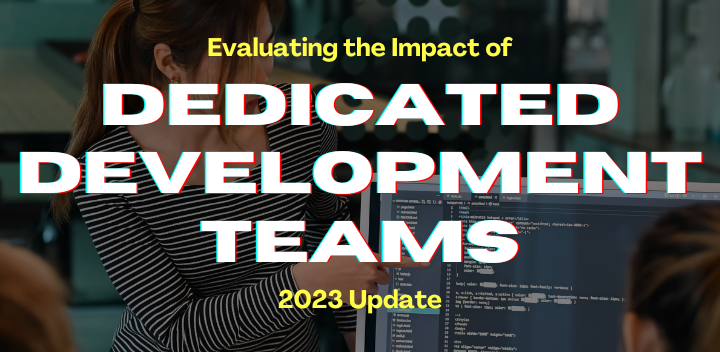Software Development Projects need the use of chaotic development technologies. The developer might create an Android app using Java, an iPhone app using Swift, or a highly interactive web app using AngularJS. For fast illustration that lets the programmer test and efficiently builds apps.

Ruby on Rails is a user-friendly application used by many of the big companies, including Twitter, Groupon, and Airbnb.
Another most used language is Python, and that is because of its highly readable code.
However, even if you are using state-of-the-art technologies, this would not guarantee the success of your project, it is very rare that technology is the reason for the failure.
Most of the difficulties that come up in software development outsourcing are because of the “human factor.” This is basically a reality with software development projects.
At Engineer Master Solutions, we are keenly aware of this and this is why we have put so much focus on management and communication with our clients.
Lack of commitment from either side, insufficient pre-planning, or inattention can sabotage even the best technology.
We are here with a solution, we know how to avoid these mistakes in software development outsourcing, which is why we have many happy customers.
You will be in a better position when you decide to outsource your software development project if you know where the pitfalls are and what to do to avoid them.
Table of Contents
Listed Below are the Following Pitfalls:
1. Never Keep Your Project at Rim
Collaborating with a software development outsourcing company asks for attention, organization, commitment, and skills. Obviously, your company should have a smooth working when you take up a new project. This way, when the other company is added, you know how to manage and everyone knows their responsibilities. No other company can do this for you. If they say that they will, then consider this as a yellow flag.
There is a surprising amount of companies that believe that a software development project simply requires them to partner with an outsourcing service provider, then entrust that service provider with full responsibility for the project while they attend to their other responsibilities.
We define this as “Keeping the project on the verge”. This is a useless strategy if what you expect for your investment is a successful project.
Without clear aims, well-defined accountabilities, the blueprint of the engineering process, and time and commitment from both partners, you will achieve very little. You might even decide your niche or new innovation is nothing but a problem and give up the dream. However, when it is done in a proper way, there are the following benefits:
- Accelerating the time to market
- Cost reduction and productivity enhancement
- Ability to identify and cut bad ideas and work with good ones
- Working with an outsourcing firm with domain expertise will result in improved internal processes for your company.
2. The Trust Factor
It is very obvious, that lack of trust can weaken any relationship. That’s why to give building trust is the utmost priority at Engineer Master Solutions. We have thinking that the trust factor is very important in our work with companies that come to us for help with software development.
The process of development needs a strong foundation that can only be initiated by humans who trust each other to invest themselves wholly in the project’s success. In practice, when two people start working together, trust is imagined, but real trust builds with time. We all are aware of what it means to gain someone’s trust. It comes down to the old sayings, “Actions speak louder than words.”
In the early phases, it is normal for a team member from either organize to wonder:
- Will they be able to do the job?
- How will this impact my career?
- Why do they ask so many questions?
- Do I have time to help them?
Whether we build trust through conversations, emails, slack comments, or team calls, we undermine trust with every action. If, for example, a milestone is not reached within the agreed-upon timeframe, then this is doubly true.
Trustworthy partners will be honest and open, letting you know the minute they realize they are not on track rather than waiting until the end of a sprint or development cycle. As well as providing an update as soon as possible, they will be clear about what they say or do.
The commitment to the project’s success must be mutual because every engineering decision, conference call, and line of code demands it.
3. Be Honest
A crucial part of trust is full disclosure. There is no reason to hide bad news when both sides are committed to a project’s success. Outsourcing partners requires clarity and honesty when we talk about all the aspects of a project, like work schedule, team priorities, deliverables, software development quality, etc.
Most of the people can identify if something is hidden by just seeing the picture of the presentation or if something is missing. So, there is no reason to hide the things related to the outsourced projects.
Communication of the reality will help in rectifying the issues before they grow into something big, or long-lasting problems. All parties included in the project should be aware of the data, good or bad, for the project to be a successful one.
4. Both Sides must Commit to the Project
People in organizations rely on senior management for guidance, both direct and indirect. Unless they are assured of support from above, they’re unlikely to take major risks. Outsourcing a development project carries inherent risks, so it is imperative that both companies are fully on board whether it involves a major change or a minor improvement.
The first step is to establish a shared vision for how the initiative will meet strategic objectives. An important part of this shared vision is to clearly define how the two companies will contribute to each other’s success.
Therefore, management can develop and stand behind realistic requirements, success metrics, and clear communication methods throughout the project.

5. Knowledge Transfer is Vital
In any new software development outsourcing partnership, knowledge transfer needs to be established. It is imperative that the client and service provider work together to define the product and the technical requirements for a new project. Failure to transfer knowledge can lead to significant problems with outsourced projects.
While team members are getting to know one another, a comprehensive knowledge base needs to be established. In fact, this initial phase lays a solid foundation for future trust.
If you want to facilitate this, make sure you do the following right from the beginning:
- Curate a project Infrastructure
- Analyze and Mitigate Risks together
- Developing project estimates and plans at a high level
- Review milestones and contingencies
- Select a software development life cycle (SDLC)
- Discuss management procedures with your team
- Learn about each other’s expectations and goals
- Prepare a detailed project plan and technology stack for the product or service to be delivered
Knowledge transfer is a critical component of any new software development outsourcing partnership, but it shouldn’t be cumbersome or time-consuming. Also, keep in mind that sharing information isn’t something you do once and check off your to-do list. It doesn’t work that way.
Continually share new knowledge and information as it emerges to keep both sides updated.
6. Collaboration is at the Core of Outsourcing
A collaborative partnership in the software development outsourcing model is achieved by bringing together teams with different skill sets in order to maximize results. At Engineer Master Solutions, we believe that great partnerships are synonymous with success.
As well, the partnership is a two-way street (as both a requirement and a benefit).
By combining talents and energies, partners create synergy. Synergy leads to a product or service beyond what the client could have produced on its own. Our clients are encouraged to think of us as partners, and we bring our top talent to help them reach success.
7. Transparency is Better
At Engineer Master Solutions, we believe in software development outsourcing transparency. By Transparency, we do not mean that all the details are shared in public, but at least all the data is in front of all the employees and all of them are available to the client. However, roles and management are important.
On a larger scope, the role of Team Lead, Client Manager, UI Designer, and a team responsible for documentation makes sense.
To that end, we authorize our skills in engineering project management. It is easy to fall into the pitfall of trying to manage each developer remotely across time zones. This type of engagement deteriorated into chaotic management. In addition, it is not scalable and causes frustration, which hamstrings productivity.
8. Solve Issues Before they Arise
Collaborating on any innovative or technical effort that is complicated in nature assures the difficulties and controversies. Embrace this reality, ask tough questions, clarify your concerns, and be ready to work together to resolve issues as they arise.
Doing so builds trust and confidence. Additionally, when difficult issues are resolved through teamwork, everybody gets energized.
9. Prioritize your Goals
Clear goals attract your whole work on a project with a vision that has been in front of you. While goals like “high quality”, “fast time”, or “low cost” are utmost, it is even more important to sort them out and clarify smaller and more focused goals.
For instance, let us say that the project is going to deliver a backup solution. A more specific aim would be to have backups restart in the event of a power or network failure.
Another important would be for the data to be restored. Or for the restoration to happen on its own without requiring a human to begin it. When management specifies clear goals, the effort to make the project successful.
10. Build Momentum Gradually
Getting started with a small project is one way to establish a new outsourcing software development relationship. In this way, both parties can evaluate the suitability of their respective teams before moving on to larger, more impactful projects. Like trust, momentum can’t be rushed. We call it “crawl, walk, run.”.
If the partners are already in the active phase of their relationship, the investment of time will pay off in future more substantial efforts. If you’re reading each other’s minds, finishing each other’s sentences, making jokes on team calls, and creating high-quality products on time and budget, you know this is happening.
On the Ending Note
It is vital to accept the fact that outsourcing is dependent on people. Outsourcing is not much of a process but it is as a relationship. We hope you will find our experience useful and outsourcing your software development project would be an admiring experience for you.


 Like
Like LOVE
LOVE Win
Win Cute
Cute LOL
LOL OMG
OMG WTF
WTF Fail
Fail


